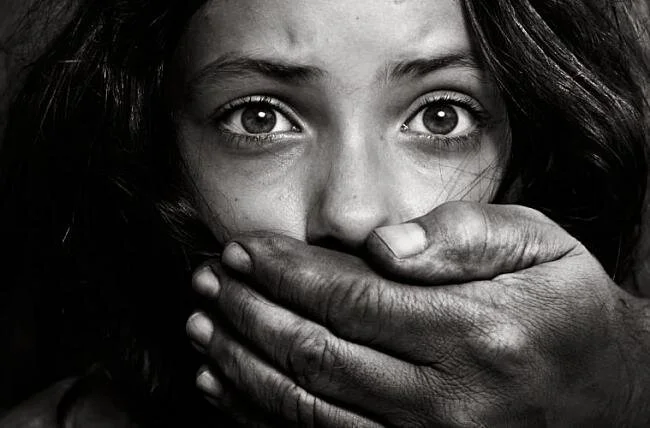Sex Trafficking is Real. And it’s Happening Right Here.
Photo from https://internetsafety101.org/trafficking
Cora Kuhlenbeck
Let’s be real. Crime happens all the time, and yet, we don’t understand its impacts until it happens to us. Sex trafficking is just one of those instances where it doesn’t feel like a reality, until it is. For Emmy Myers of Hartford, Wisconsin, this became her story.
Emmy Myers had “what appeared to be a picture-perfect suburban life, and was involved in a variety of extra-curricular activities.” She had many friends, and yet “felt alone in a crowded room.” Myers believes it was these vulnerabilities of loneliness and the desire to be loved that made her easy prey. It started with her high school relationship. Her boyfriend was older, and unknown to Emmy, a pimp for sex trafficking. He charmed her with his kind words, gifts, and charismatic character that deeply appeal to high school girls, especially ones with insecurities. Emmy thought she was being loved, when really, she was being groomed for exploitation.
Grooming is the most effectual process used in trafficking that involves preparing a victim to be exploited. It usually begins with a flirtatious relationship between pimp and victim. Then it evolves into gifts, promises, and “love.” The predator will begin a bond with the victim through such measures, often deterring one from their relationship with their family and making the victim believe they will provide everything for them. Traffickers will embed this idea in the victim that they will achieve all their “hopes and dreams” if they trust their trafficker and not their family “who is holding them back.” It is all about developing trust, just like in a normal relationship, except that this “trust” is hiding their true intentions of manipulation and control. Grooming is only one of the many signs communities need to be aware of in order to prevent sex trafficking from spreading.
Other obvious signs of trafficking takes form in behaviors associated with the victim. These can be:
physical abuse
absence from school or work
tiredness
depression
sexualized behavior
bragging about money or new things
tattoos/gang affiliation
Just as Emmy Meyer’s story shows, trafficking can happen anywhere and to anyone. “Nobody is immune to the grips of a manipulative predator.” Trafficking is a lucrative business that exploits whoever it can, as long as there is a demand for sex and money being made. The average yearly amount that a trafficker makes per victim is $150k to $200k. The money matters, the victims do not. However, some groups of people are more at risk than others. The Counter Trafficking Data Collaborative, or CTDC, the first global data hub on human trafficking, reckons that women are 70% likely to be trafficked as opposed to 25% for men, with unidentified or transgender at 5%. Trafficking also targets children more often than adults. It is noted that the average age of children entering this life is 13. Unfortunately, the demand for even younger children is growing.
So you might be asking, why doesn’t a victim simply walk away? Well, that’s because the life of sex trafficking can also lead to drug abuse. Many times traffickers will coercively drug their victims so that they are more willing to comply to demand. Victims then build up an addiction or dependence and continue to stay in the life to obtain the drugs. After Emmy became dependent on drugs, she found it even harder to get out.
“She was sold to the highest bidder again and again, each time falling farther into a life she never dreamed of as a little girl.”- Lacey Hope Project
Along with drugs, Emmy was manipulated through psychological damage. Over and over again, she was told that she was only destined to sell her body. Her family, especially her sister, was also threatened. The CTDC notes that the highest form of control used on female victims is psychological abuse. One specific form that often stems from grooming is Stockholm Syndrome. Abusers will tell their victims, who tend to live in bad situations, that they, too, once experienced the same trauma when they were younger. The victim then forms a strong emotional attachment to their abuser, believing that they need to help each other. Also, a lot of times victims feel immense guilt for the actions they were forced into. Already feeling isolated from the world, victims feel that they will be rejected from society even more so because of the life they’ve endured.
After years of “hell,” Myers got an opportunity to escape. She was then arrested for crimes she committed while in the trafficking ring. Once released, Emmy’s mother took her to a human trafficking awareness event. The leader of the event asked the crowd to close their eyes and picture what they thought a trafficking victim looked like. Instead, Emmy looked around at the crowd, wondering if they pictured her.
“That day was the beginning of what became Lacey's Hope Project.”
Lacey’s Hope Project was named in tribute of Emmy’s friend, who was also a victim of sex trafficking, but unable to escape. This organization intends to fight social justice issues involved with sex trafficking, as well as drug abuse. In order to do this, they follow three essential pillars: prevention, awareness, and hope. They are bringing recognition to this problem that exists in all places of the world, with a focus on the seemingly safe suburbs of Wisconsin.
Sex trafficking is a global pandemic that has victimized 20-40 million people worldwide. In Wisconsin alone, approximately 400 children are trafficked each year, with at least one in every 72 counties. As a state, we need to acknowledge this growing problem, and as a community, we need to stop it. Especially with Covid, sex trafficking numbers have only sky rocketed. Traffickers are focusing their efforts on the online world, where many children are now spending their time. It is imperative that we notice the signs associated with sex trafficking and use it to prevent the exploitation of our people right here at home, because “by speaking for those who can’t, we will fight for change and inspire hope.”






